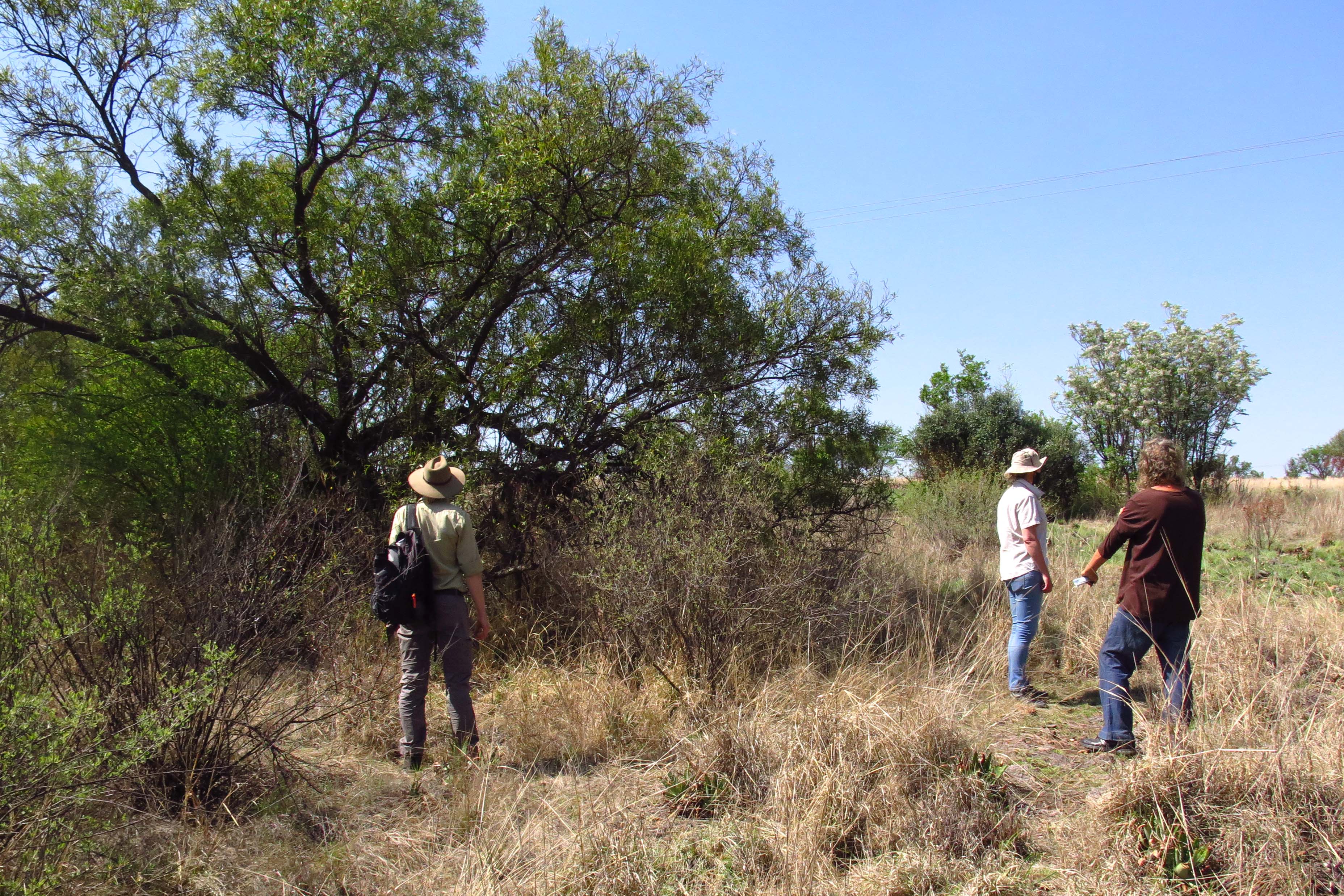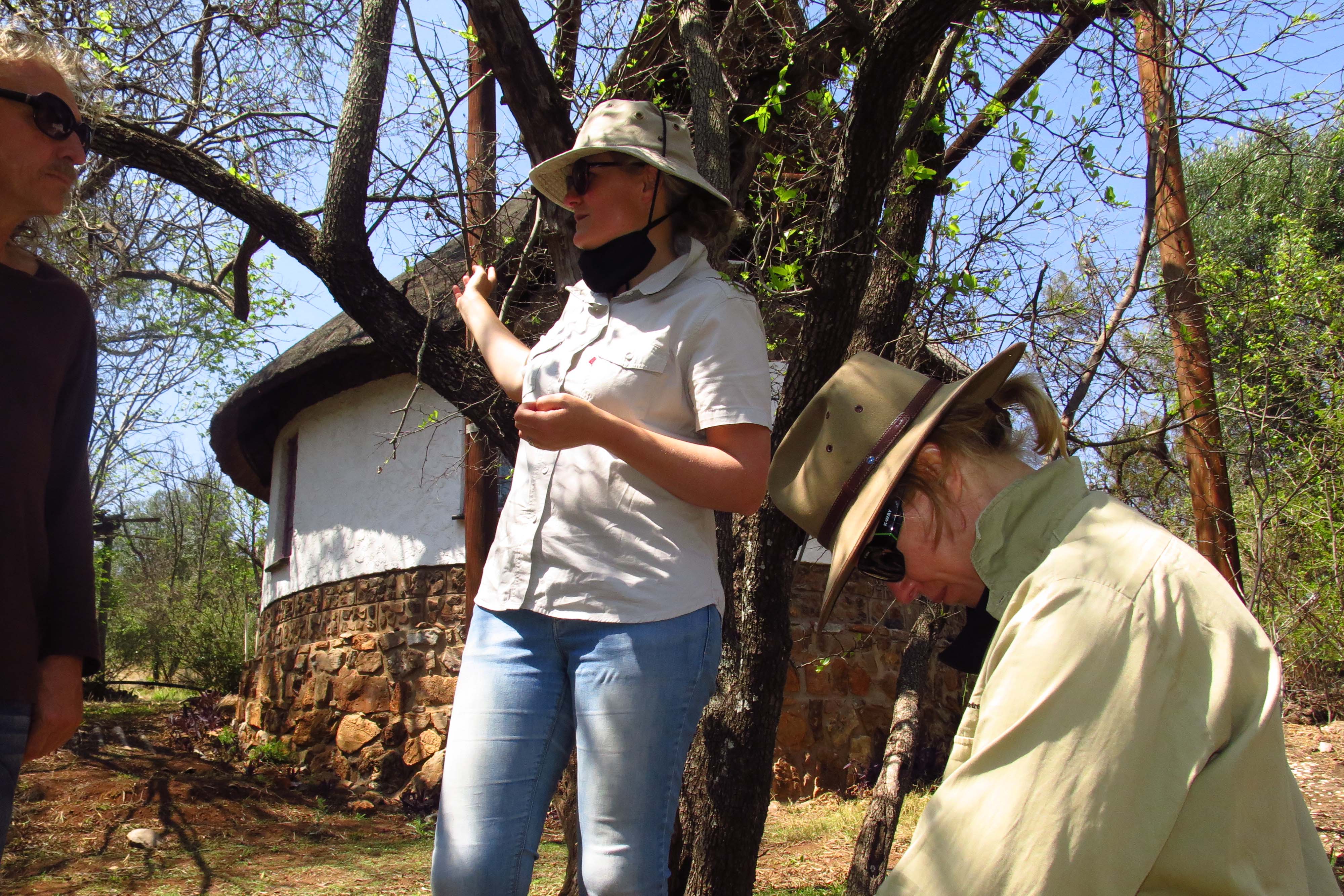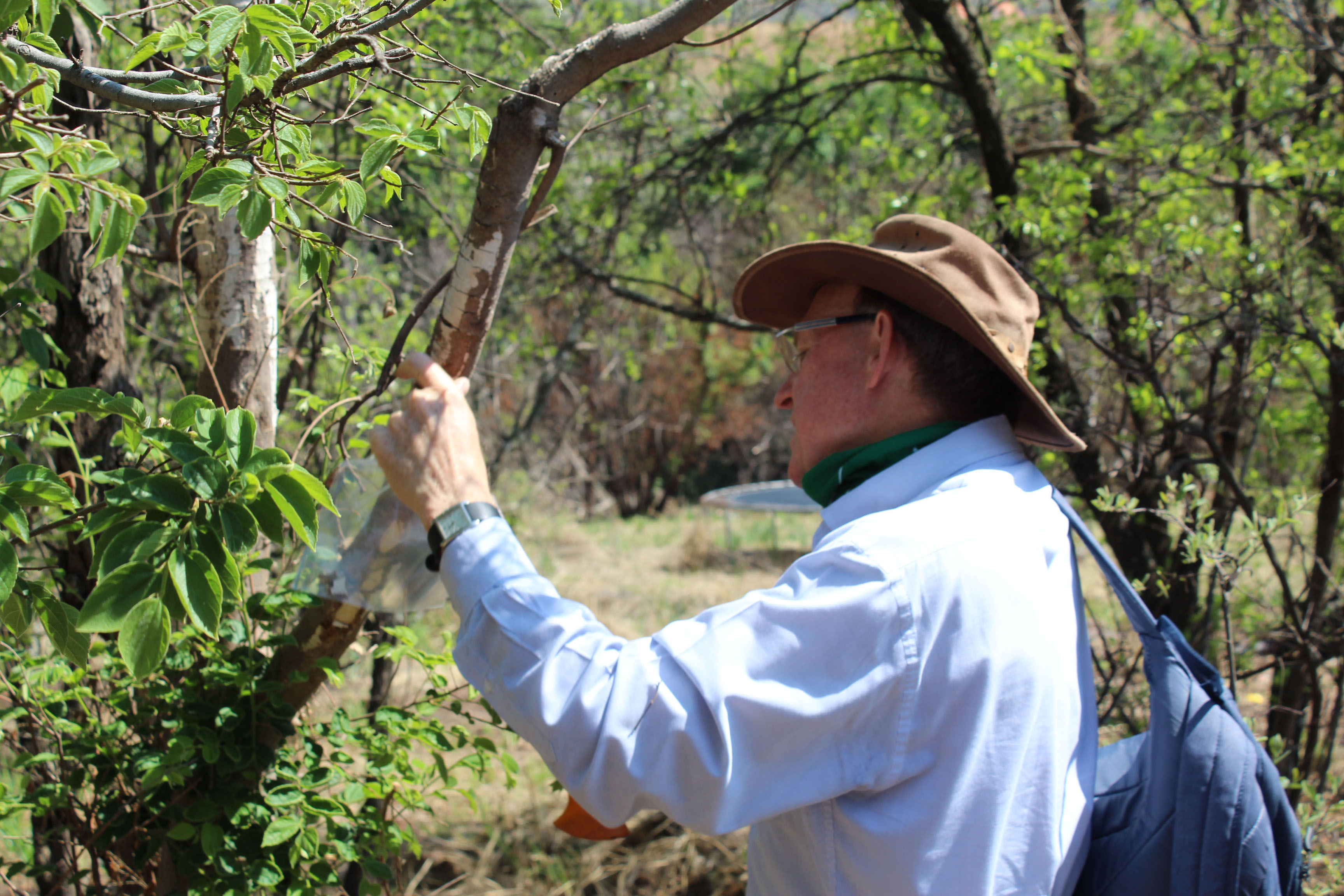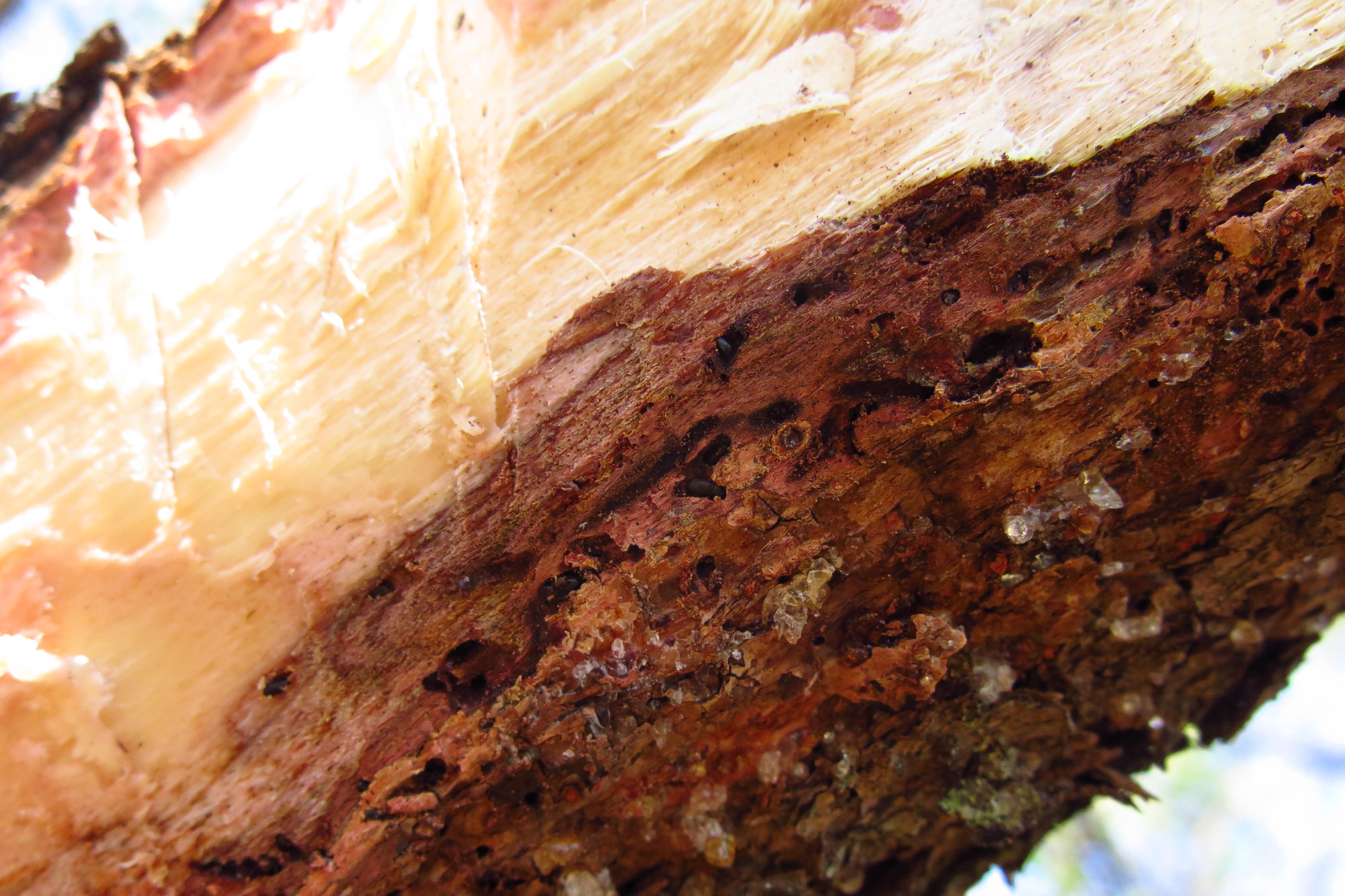Inspection of trees dying in the Hennops river valley 2020-10-19
Relatively regular reports of trees dying in various parts of Gauteng have emerged during the course of the past five years. Some of these have been referred to the tree health specialists at FABI (Forestry and Agricultural Biotechnology Institute) at the University of Pretoria (UP). These reports have also come at a time when the invasive wood-boring Polyphagous Shothole Borer (PSHB) has become well-known in Gauteng and elsewhere in South Africa. The consequence is that tree death is now commonly attributed to the PSHB.
One of the areas where trees have been reported dying is in the Hennops river valley, where especially white stinkwood (Celtis africana) and karee (Searsia lancea) are most seriously affected. Dr Trudy Paap, who runs the disease diagnostic clinic at FABI, was recently accompanied by Prof. Mike Wingfield (founder Director of FABI) and Dr Michelle Greve, a plant ecologist in the Department of Plant and Soil Science at UP, to undertake a preliminary inspection of the problem. This visit was requested by local resident Mr Willem Snyman, who assisted the team. Although the cause of the problem is far from obvious, it is clear that large numbers of trees are dying. The inspected trees were not infested by the PSHB, suggesting an alternative cause for the decline. The fact that more than one species of tree is dying and that symptoms are different on these trees, indicates an environmental problem, which could include climate change events, land use change and pollution.






